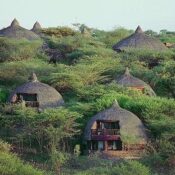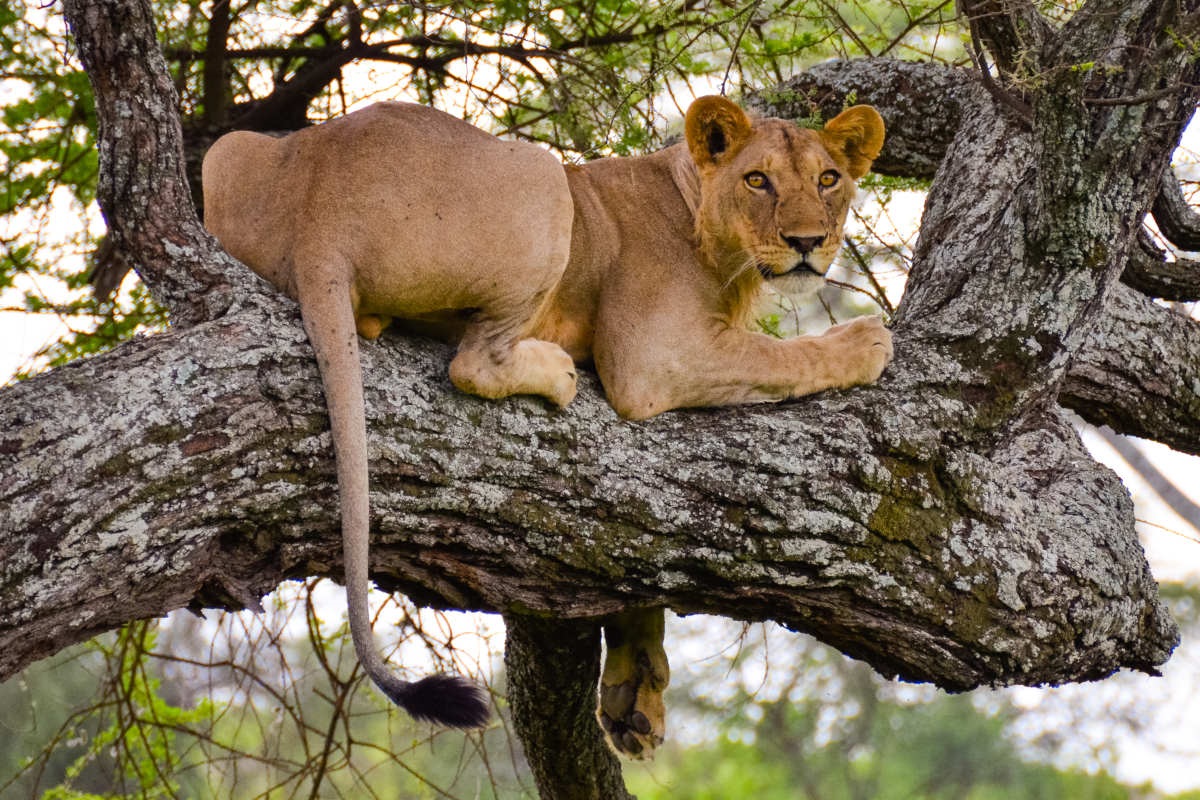
Trekking from Empakai Crater to Lake Natron
Trekking from Empakai Crater to Lake Natron offers a diverse and challenging journey through some of Tanzania’s most stunning and untouched landscapes in the Ngorongoro Highlands. Starting at the lush and serene Empakai Crater, trekkers experience a descent through dense montane forests, followed by a transition into vast savannah grasslands. The route eventually leads across arid plains to the dramatic and surreal Lake Natron, an alkaline lake nestled at the foot of the active Ol Doinyo Lengai volcano. Along the way, trekkers encounter an array of wildlife, including buffalo, flamingos, and herds of wildebeest, as well as the rich cultural heritage of the Maasai people. The trek’s diverse environments and striking views make it a memorable and rewarding adventure.
1. Starting Point: Empakai Crater
- Location: Empakai Crater is situated in the Ngorongoro Conservation Area, in northern Tanzania, a region known for its rich biodiversity and geological history.
- Description: This pristine caldera is surrounded by lush vegetation, with a deep, crater floor lake that reflects the rich blue sky. The forested walls of the crater are thick with trees and offer a feeling of seclusion and tranquility, providing an idyllic starting point for the trek. The lake, while alkaline, supports a variety of birds and wildlife, creating a unique, tranquil ecosystem.
- Wildlife: Visitors may spot large herds of buffalo, monkeys, and a variety of bird species like the rare African grey parrot and eagles. The flora around the crater is equally impressive, with dense forests and water sources supporting diverse plant life.
2. Trekking Down from Empakai Crater
- Terrain: The trek begins with a steady descent down the steep crater rim, which offers breathtaking views of the crater floor. The path winds through dense forests and alpine vegetation, with occasional sightings of waterfalls and streams that add to the area’s natural beauty.
- Flora and Fauna: The lush montane forest is home to towering trees, moss-covered rocks, and vibrant flora such as ferns and orchids. As you descend further, the dense forest gradually opens up, revealing a wider variety of wildlife, including bushbuck, monkeys, and various bird species.
- View: From the crater rim, trekkers are treated to panoramic views of the vast volcanic landscapes, with distant peaks and valleys creating a stunning backdrop. This section of the trek is visually captivating, offering unique photo opportunities of the highland ecosystems.
3. Transition to Savannah
- Landscape: After passing through the forested area, the trek leads into wide open plains, marking the transition from the cool, shaded forest to the warmer, open savannah. The change in landscape is dramatic, with expansive grasslands stretching to the horizon.
- Wildlife: The savannah offers a stark contrast in both terrain and fauna, with antelopes, zebras, wildebeest, and giraffes often visible in the distance. This area is also home to predators like lions and cheetahs, though sightings are rarer.
- Maasai Interaction: The route may pass through Maasai villages, where trekkers can engage with local communities, learn about Maasai culture, and observe their traditional way of life. The Maasai people, known for their pastoral lifestyle, tend cattle and live in harmony with the land. Visitors may be invited to share in traditional customs, such as songs, dances, or visits to bomas (villages).
4. Journey Towards Lake Natron
- Terrain: The trek continues across a series of dry, dusty plains, with the sun beating down and temperatures rising, making it a physically demanding portion of the journey. The heat and the arid environment contrast sharply with the previous lush forest, requiring stamina and endurance.
- Views: Along the way, trekkers are treated to impressive views of the towering Ol Doinyo Lengai, an active volcano that dominates the landscape. The majestic peak of this “Mountain of God” is often visible in the distance, adding a dramatic touch to the surrounding plains.
- Challenges: The dry, hot conditions can be taxing, and trekkers need to be prepared for long, strenuous stretches. Hydration and sun protection are essential during this part of the journey.
5. Arrival at Lake Natron
- Lake Features: Lake Natron is a shallow, alkaline lake that takes on a striking red hue due to the high concentration of salt and minerals, creating an otherworldly, surreal environment. The lake’s extreme salinity makes it inhospitable to most aquatic life, but its waters are perfect for the flamingos that nest here.
- Flamingos: Lake Natron is one of the most important breeding grounds for the lesser flamingo, and trekkers often encounter large flocks of these elegant birds along the shores. Watching them wade in the shallow waters or take off into the sky is a magical experience.
- Volcanic Landscape: The lake sits at the base of the active Ol Doinyo Lengai volcano, which is considered sacred by the local Maasai. The volcano’s dramatic presence adds to the lake’s unique landscape, where volcanic rock formations and mineral-rich waters create a truly remarkable setting.
6. End of Trek
- Reflection: The trek culminates at Lake Natron, offering trekkers a moment to pause and reflect on the journey. The surreal beauty of the lake, combined with the contrast of the rugged volcanic terrain, provides a peaceful and awe-inspiring conclusion to the adventure.
- Experience: The trek from Empakai Crater to Lake Natron is a transformative experience, taking adventurers through diverse ecosystems, from lush forests to vast savannahs and arid plains. The mix of wildlife sightings, cultural encounters, and striking landscapes makes it a highly rewarding journey, ideal for nature lovers, trekkers, and those seeking a more remote, untouched adventure.





